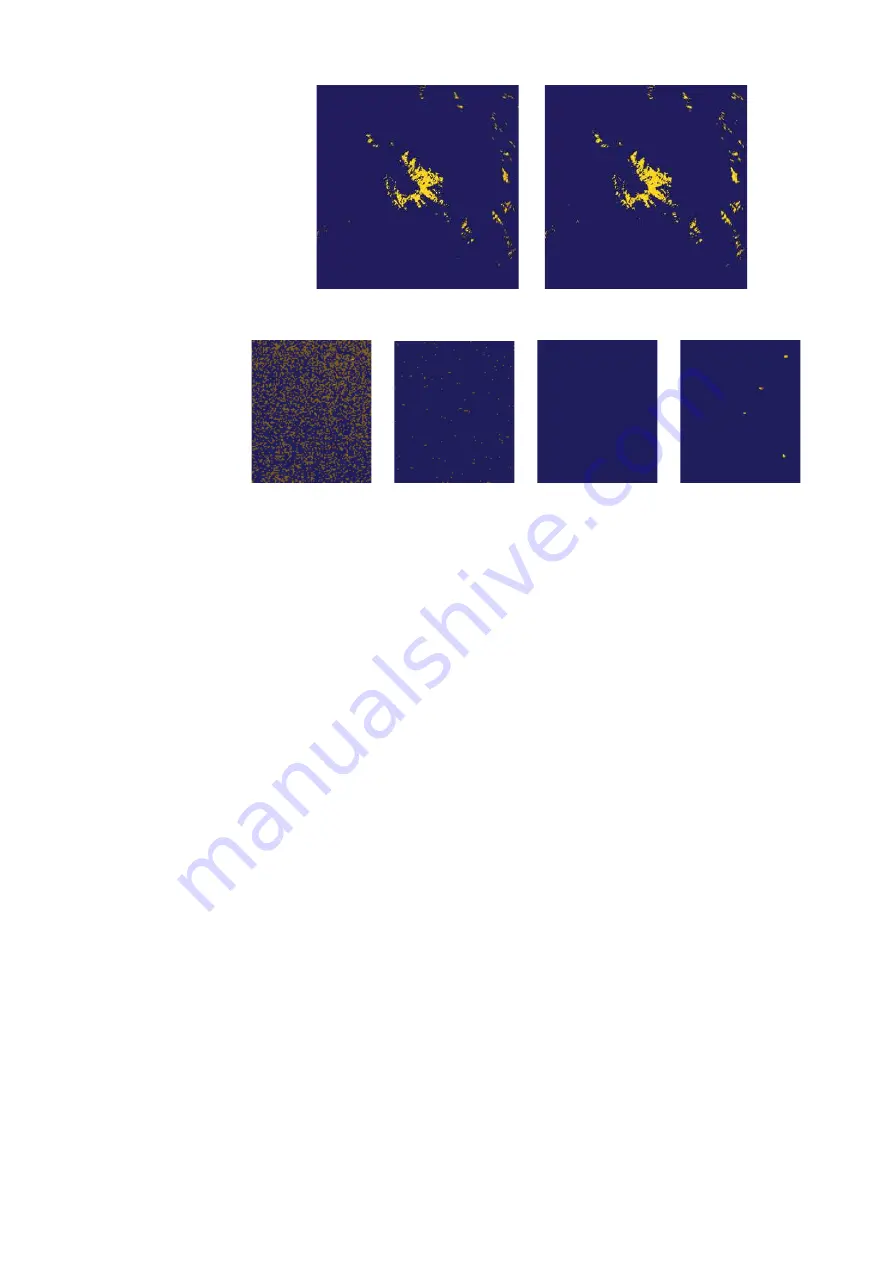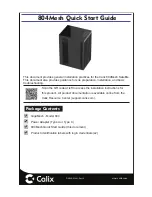
70 |
Radar presentation and video processing |
Argus Radar Operator Manual
Sweep to Sweep Correlation
Target Enhancement
The above figures show zooms of the areas delimitated by the white rectangles drawn in the
previous four figures, in a part of the radar image in which some small and weak echoes are
on the limit to be visible with IR off, definitely not visible with IR on and with Sweep to Sweep
Correlation and very visible with Target Enhancement. This demonstrates that the type of IR
must be chosen according to the environment around own ship: IR off when the maximum
signal from the receiver is needed, IR on when the interference disturbs the visualisation and
consequently the radar target also (the situation shown by the above pictures, and the usual
one), Sweep to Sweep when strong interference ar
e not sufficient cleaned by the IR and Tar-
get Enhancement when necessary to distinguish between weak real echoes and interference
or clutter with a small difference of amplitude between each other.
Transceiver pulse staggering is always enabled, except when IR is off. When enabled, the
transceiver PRF is changed alternatively for each sweep. Under this condition, spiral interfer-
ences and second trace echoes are splitted in range from sweep to sweep. Then, IR process-
ing clears all the echoes found at the same range that are not present in each sweep.
Scan to Scan correlation
The function of the Scan to Scan Correlation control is to distinguish real target echoes from
sea clutter. Correlation is performed by storing and averaging echo signals over successive
picture frames. If an echo is solid and stable, it is presented in its normal intensity. Sea clutter is
averaged over successive scans resulting in reduced brilliance, making it easier to discriminate
real targets from sea clutter.
Echo averaging uses scan to scan signal correlation technique based on the true motion over
the ground of each target. Thus, small stationary targets such as buoys will be shown while
suppressing random echoes such as sea clutter. True echo average is however not effective
for picking up small targets running at high speed over ground or, as well, small targets at low
scale, when the radar echo covers great areas in very short time. For this reason the operator
has to pay extra attention to fast moving targets.
Pressing the Scan to Scan button, a list with the selectable number of scans will be opened.
The system will perform the above mentioned correlations within the set number of scans, to
distinguish the real echoes from the false.
Scan to scan correlation is a pr
ocess that filters the radar echoes that are not present in the
same position for N consecutive scans. N is a number comprised between 3 and 4.
This means that an echo that changes its position during the correlation time (depending
also of antenna rotation rate) more than its dimension can be cancelled from the PPI.
The table below is useful to estimate which echoes will be stable on the PPI according to their
maximum speed.
For example, if the antenna rotates at 20 rpm and the operator selects Scan to Scan 2/3, a
Summary of Contents for ARGUS FMCW 3G
Page 1: ...ENGLISH ARGUSRADAR SYSTEM User Manual navico commercial com...
Page 2: ......
Page 149: ......
Page 150: ...988 10185 004...
















































